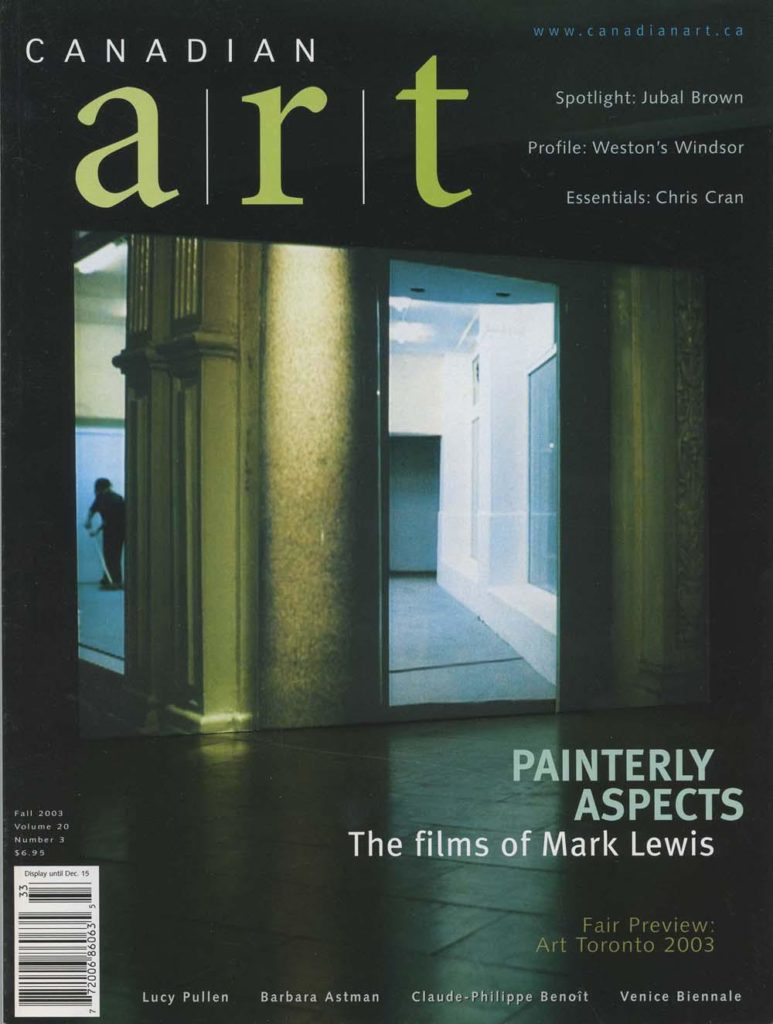Mark Lewis began to work with the analytic concept of what he refers to as “cinema in parts” in 1995. For the past few years, his focus has shifted away from its purely film-historical reference and towards film’s greater autonomy as a medium. It is a qualified autonomy, however, since Lewis’s work displays an ever closer relationship to painting. In contrast to his earlier film Centrale, which narrated the impossible encounter of two people, his new films no longer pretend to be (fragments of) stories. Moreover, they are often relatively static and/or consist of a single, uncut sequence. Their eminently painterly effect is due to a recourse to familiar paintings, classical motifs and genres, and also to the transfer to film of other media-specific characteristics. The films in Lewis’s “synthetic” period, particularly those produced in North America (does Lewis equate North America with nature, and London with society/culture?), therefore draw the viewer into an association with images—a problematic association, as we shall see.
So begins our Fall 2003 cover story. To keep reading, view a PDF of the entire article.









